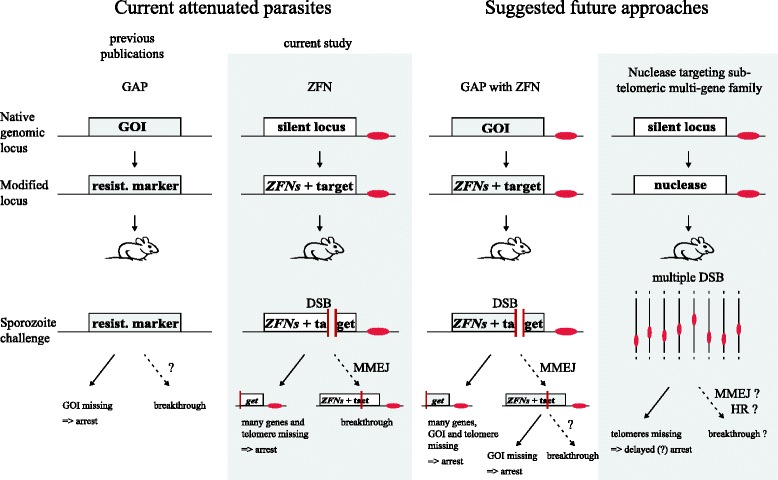Fig. 6.

Current and potential future liver stage attenuated parasites. GAP parasites are generated by the deletion of a gene of interest (GOI) essential for the Plasmodium liver stage. While this leads to developmental arrest in the liver in most cases, rare breakthrough events are observed. The frequency depends on the GOI, and how single parasites survive is not understood. ZFN arrested parasites described in this manuscript arrest as they lose the arm of the chromosome lacking the centromere after DSB. Rare breakthrough events are the result of DSB repair via MMEJ and result in loss of the ZFN target site. Potential future approaches include the combination of GAPs with ZFNs. A single genetic modification allows for the replacement of a GOI with a ZFN construct. These parasites have to overcome both the DSB via MMEJ and the missing gene to result in a breakthrough infection. However, the localisation of the GOI on the chromosome influences the number of genes lost after DSB and thus possibly attenuation. Another potential approach is the use of a nuclease to target conserved sites in a subtelomeric multi-gene family (Additional file 7). This leads to multiple DSBs, resulting mainly in the loss of telomeres. Developmental arrest might be delayed. Potential repair can occur via MMEJ, resulting in the loss of the target site or via HR restoring the target site. Centromeres are drawn in red, DSBs are depicted with a gap, dashed arrows mark rare events
